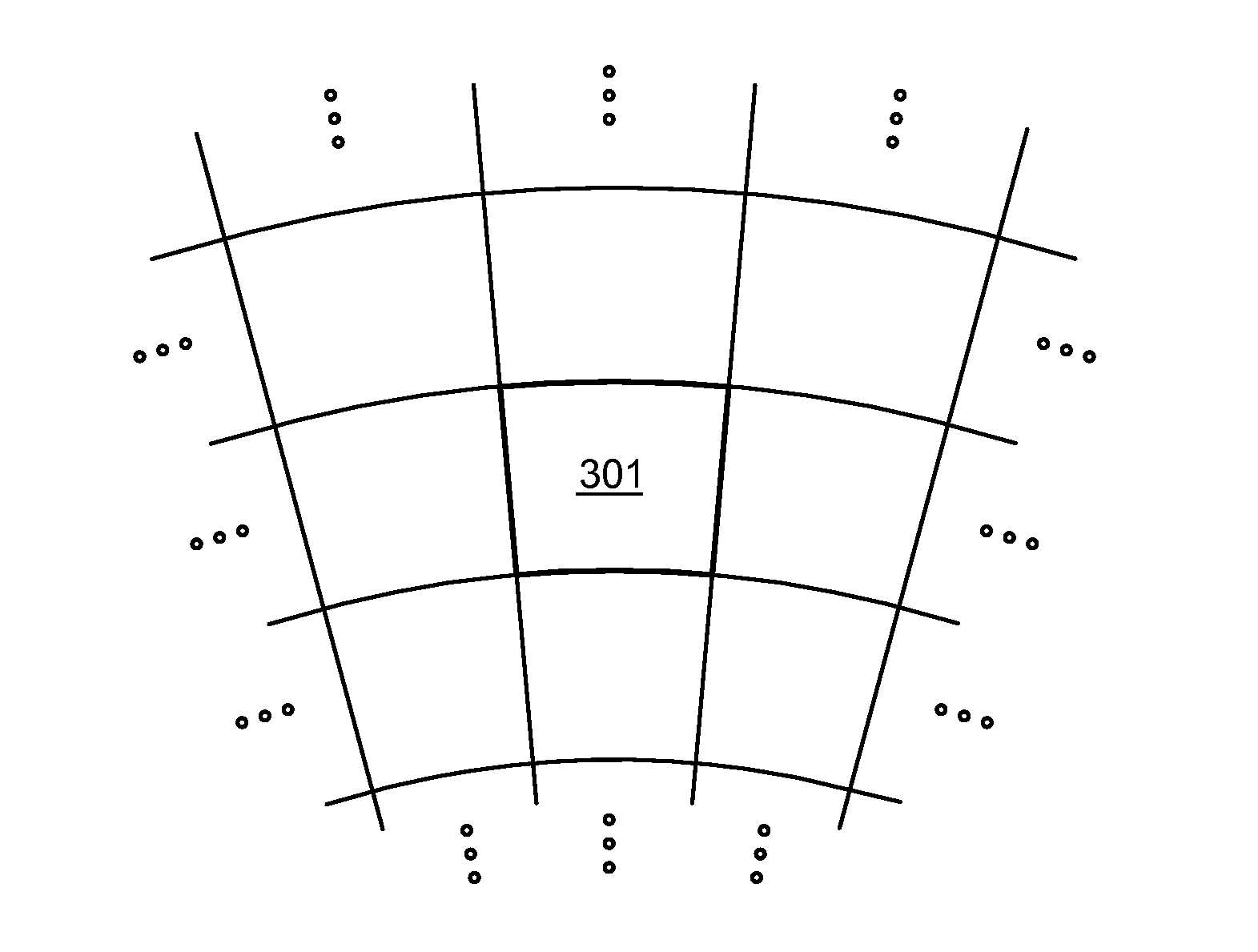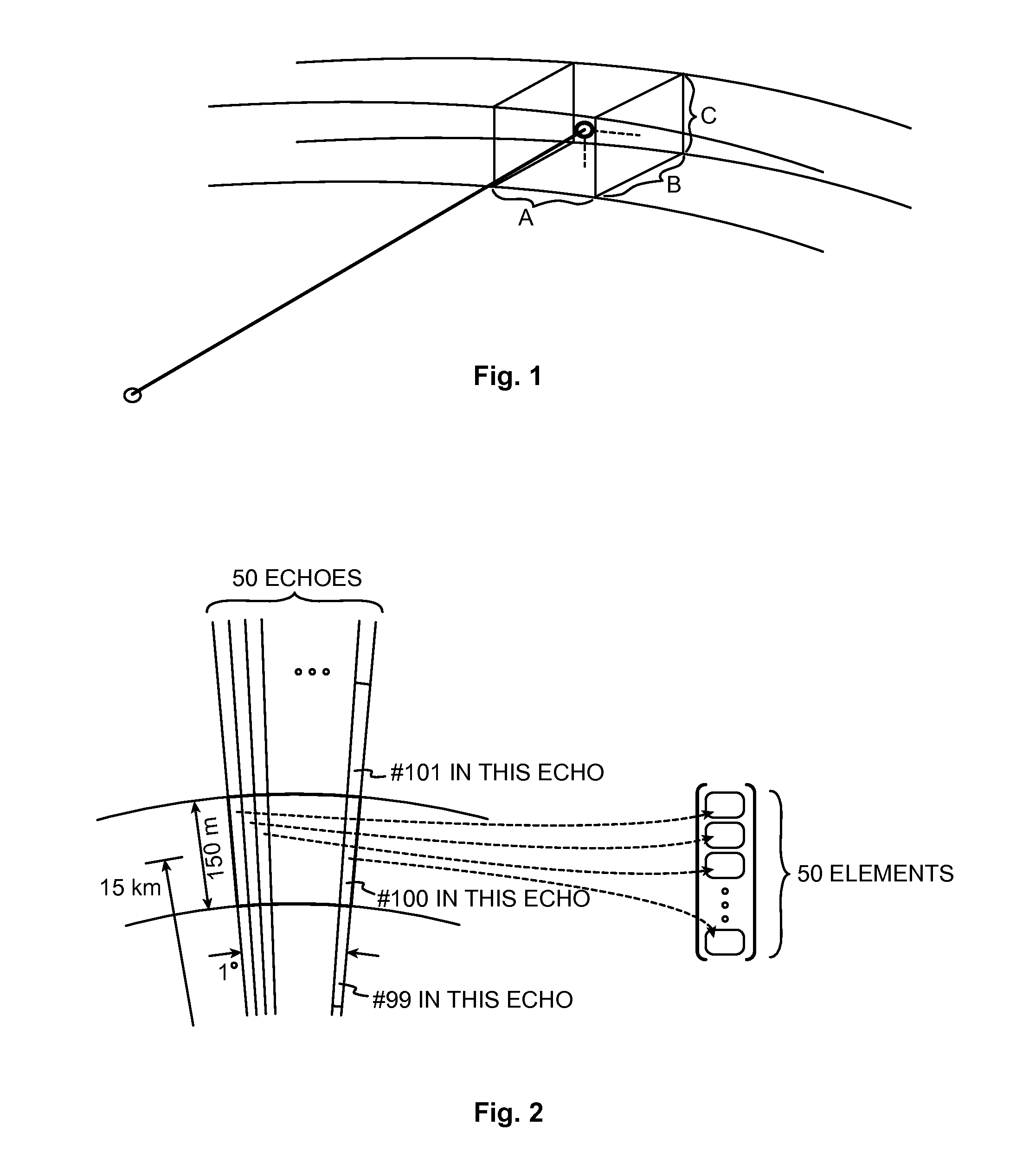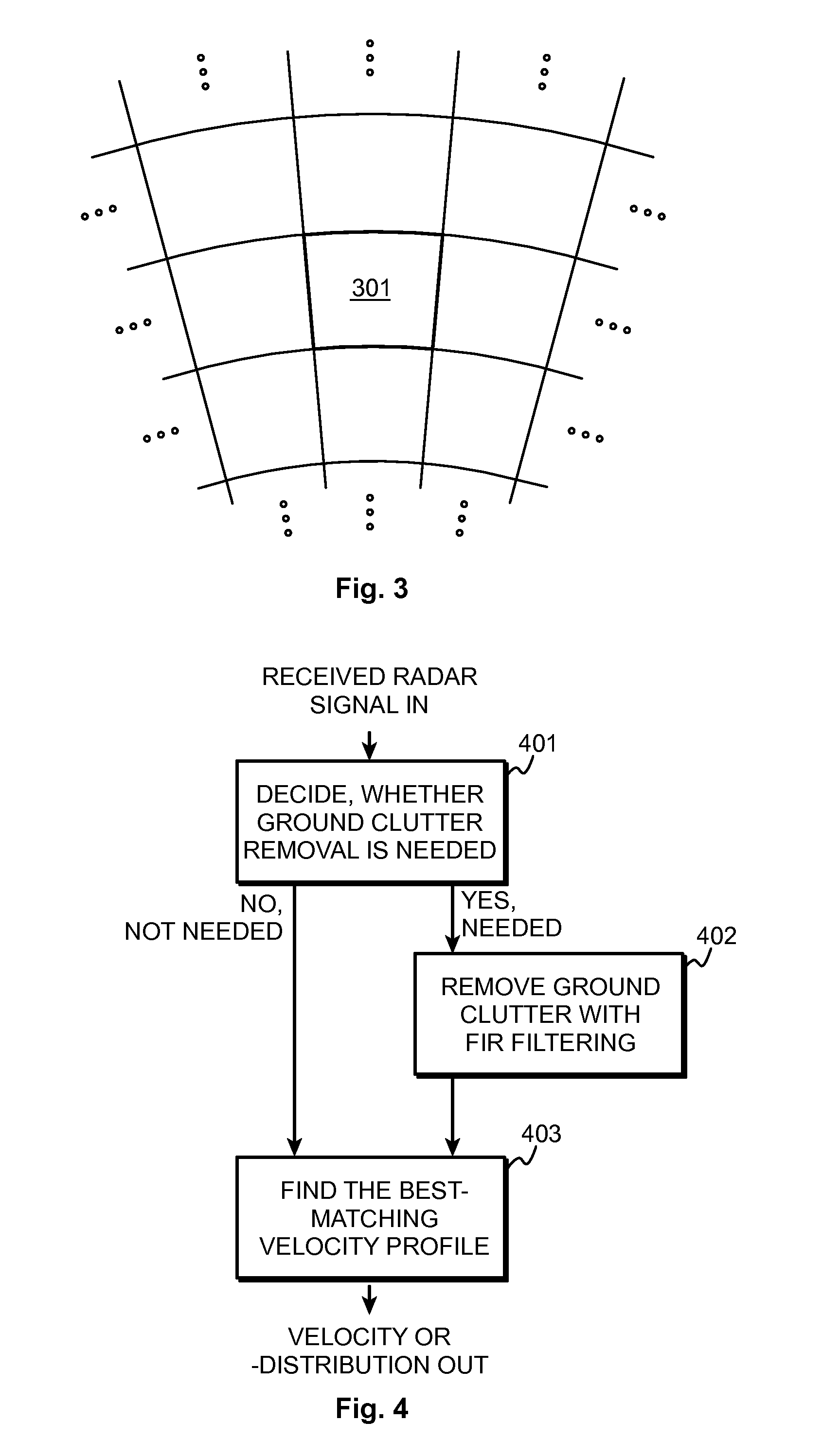Method and arrangement for removing ground clutter
- Summary
- Abstract
- Description
- Claims
- Application Information
AI Technical Summary
Benefits of technology
Problems solved by technology
Method used
Image
Examples
Embodiment Construction
[0035]The speed of light is approximately 300 m / μs and the microwave pulse travels at that speed but the echo has to travel all the way back to the antenna from an increasing distance. The measured range at which observations are made thus increases by 150 m / μs, not 300 m / μs.
[0036]Weather radar measurements aim at characterizing the meteorological phenomena up to a certain maximum range from the radar transceiver with a certain spatial resolution. FIG. 1 illustrates how a measured point actually corresponds to a volume. The width A of the volume is the selected azimuthal output resolution, which is for example one degree. Its length B is the range resolution, and its height C equals the width of the antenna beam in the vertical direction.
[0037]The data coming from the receiver is a stream of complex numbers that represents the echo from a pulse the radar has sent. The range resolution is defined by the data rate, which can be for example one MHz. This translates to one complex numbe...
PUM
 Login to View More
Login to View More Abstract
Description
Claims
Application Information
 Login to View More
Login to View More - R&D
- Intellectual Property
- Life Sciences
- Materials
- Tech Scout
- Unparalleled Data Quality
- Higher Quality Content
- 60% Fewer Hallucinations
Browse by: Latest US Patents, China's latest patents, Technical Efficacy Thesaurus, Application Domain, Technology Topic, Popular Technical Reports.
© 2025 PatSnap. All rights reserved.Legal|Privacy policy|Modern Slavery Act Transparency Statement|Sitemap|About US| Contact US: help@patsnap.com



